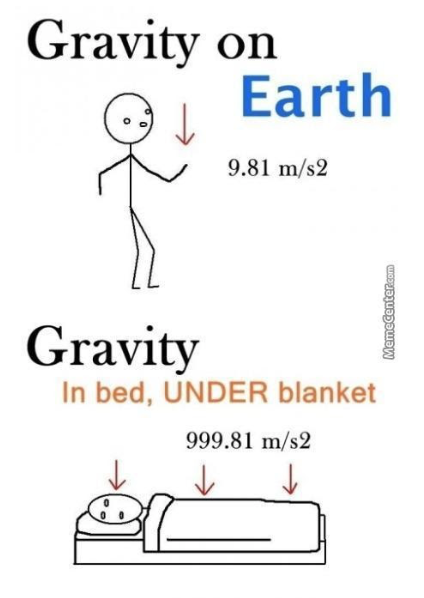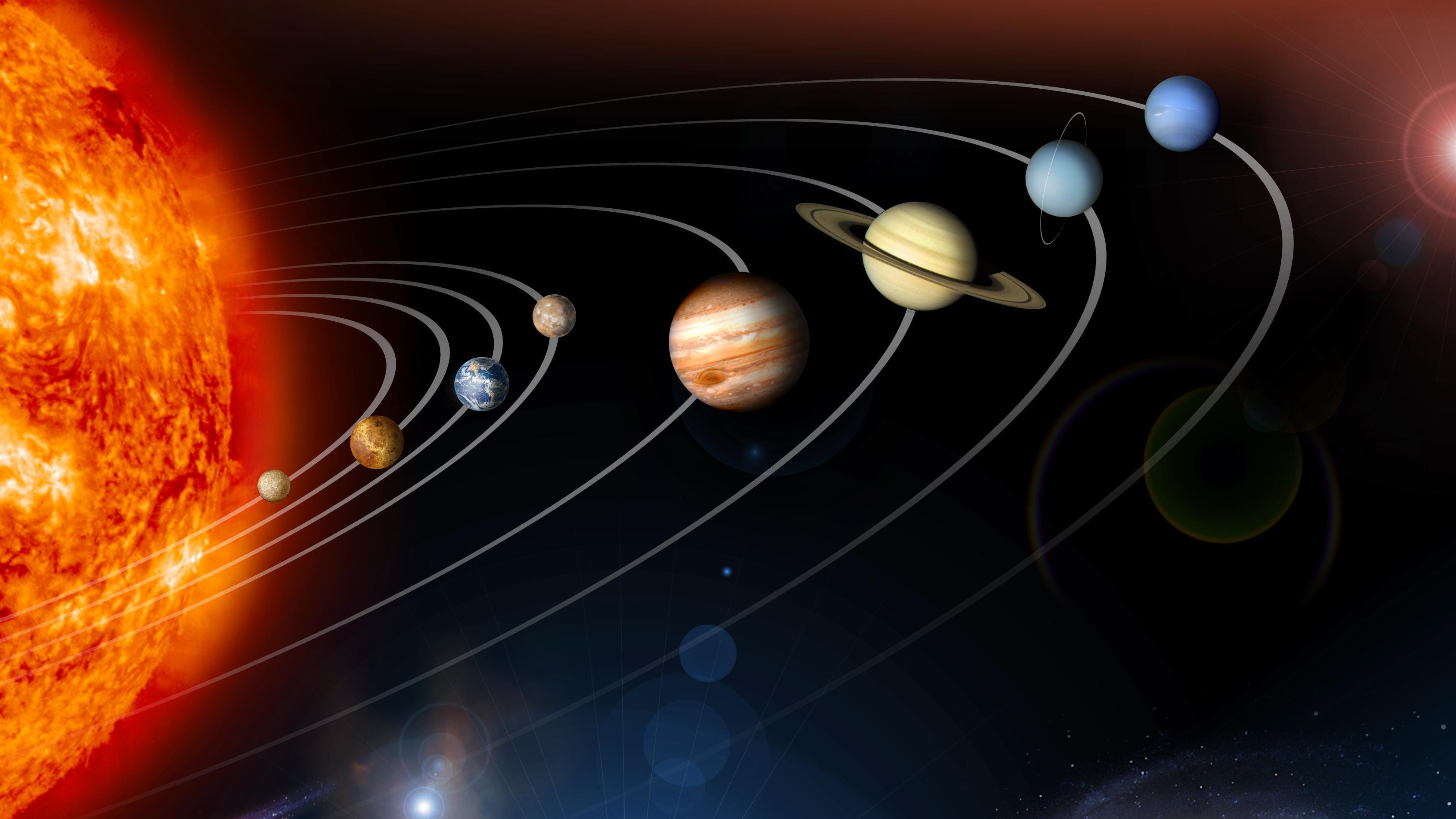Peter Apps
Kashvi Panjolia
AP Physics 1 🎡
257 resourcesSee Units
Gravitational Forces
Gravitational forces are exerted at all scales and dominate at the largest distances and mass scales.
The Force of Gravity or Weight is given as mass times acceleration due to gravity (mg). From this equation, we can gain the knowledge that the larger an object’s mass, the more magnitude the force of gravity will garner.

Image courtesy of memecenter.com.
Moreover, on astronomical scales gravity dominates over the other fundamental forces: the strong force, electromagnetic force, and the electroweak force. Despite the fact that gravity is usually the weakest of the four fundamental forces there are two key factors that help it dominate on this specific scale: gravity has an infinite range, and there is no negative mass.
The Four Fundamental Forces
- The Strong Force - binds the fundamental particles of matter together to form larger particles
- Electromagnetic Force - acts between charged particles
- The Electroweak Force - particle decay
- Gravity - the attraction between two objects that have mass or energy
For the purposes of AP Physics 1, you only need to understand the strong force and gravity. The strong force is the force that holds the nucleus of an atom together and is responsible for the stability of atomic nuclei. The strong force has a very short range and only acts between particles that are very close to each other. As the particles get farther apart, the magnitude of the strong force decreases.
Gravitational Domination
The strong and weak forces are very short-ranged, so outside of the nuclei of atoms, these forces quickly become zero. Additionally, while there is no negative mass, there is such a thing as a negative electric charge that affects electromagnetic forces. If you place a single positive electric charge near a single negative electric charge, the negative charge cancels out the positive charge somewhat. This means the electromagnetic force is not usually very large since the positive and negative charges keep negating each other.
Gravity, however, is a force that is exerted between any two objects that have mass. The strength of the gravitational force is determined by the mass of the objects and the distance between them. The greater the mass of the objects or the closer they are to each other, the stronger the gravitational force between them. This implies a direct relationship between the mass of the objects and the gravitational force, and an inverse relationship between the distance of the objects and the gravitational force.
At the largest distances, the gravitational force dominates over other forces, such as the strong force. This is because the gravitational force is extremely long-range, meaning that it can act over large distances. For example, the gravitational force between the Earth and the Sun is what keeps the Earth in its orbit around the Sun. Even though the Sun is 93 million miles away from the Earth, the gravitational force between them is strong enough to keep the Earth in its orbit. Recall that the strong force decreases as distance increases, so it would not have a large magnitude in this situation.

Image courtesy of Space.com.
At the largest mass scales, gravity is dominant because it is the only force that can act over such massive bodies. For example, gravity is the force that holds galaxies together. The gravitational force between the stars and planets in a galaxy is strong enough to keep them all in orbit around the galaxy's center of mass.
Gravity is a long-range force because the strength of the gravitational force between two objects decreases only as the square of the distance between them (this idea is explored more in the next guide). This means that as the distance between two objects increases, the strength of the gravitational force between them decreases, but it does not decrease as quickly as it would for a short-range force.
For example, if you double the distance between two objects, the strength of the gravitational force between them will decrease to one-fourth of its original value. If you triple the distance, the strength of the gravitational force will decrease to one-ninth of its original value.
On the other hand, for a short-range force such as the strong nuclear force, the strength of the force decreases exponentially with the distance. That means that as the distance between two objects increases, the strength of the force decreases much more quickly than it would with gravity.
🎥Watch: AP Physics 1 - Unit 3 Streams
Browse Study Guides By Unit
👟Unit 1 – Kinematics
🌀Unit 2 – Dynamics
🚀Unit 3 – Circular Motion & Gravitation
⚡️Unit 4 – Energy
⛳️Unit 5 – Momentum
🎸Unit 6 – Simple Harmonic Motion
🎡Unit 7 – Torque & Rotational Motion
💡Unit 8 – Electric Charges & Electric Force
🔋Unit 9 – DC Circuits
🔊Unit 10 – Mechanical Waves & Sound
📚Study Tools
🧐Exam Skills

Fiveable
Resources
© 2025 Fiveable Inc. All rights reserved.